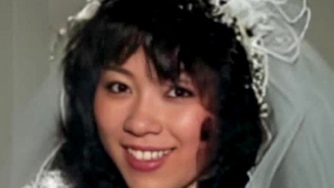Twice last Monday, Orioles president of baseball operations Mike Elias said the offseason goal is to enter spring training with a club that can compete for the AL East title — an aim so simple and modest that it required clarification that a World Series was also the goal.
They feel one and the same to me — to be projected at or near the top of a division with three playoff teams would easily put the Orioles in the top handful of clubs in the American League, and that’s a good place to start.
It’s not necessarily the measuring stick but who will be doing the measuring that has stuck with me since then.
Elias said the goal is to have a team “where we like the way it looks, Baltimore likes the way it looks, the American League East and the baseball world is excited about that team, and it’s a group of players that we say … we’re going to be right in the hunt for the division title.”
That’s … you? Me? The national baseball media? The die-hard Birdland Members and the anti-Elias Blue Check Brigade?
Elias’ Orioles just finished a dispiriting 87-loss season, one in which the club’s offseason of short-term deals and stopgap measures caught much of the blame and during which much of their homegrown group of hitters underperformed and left questions about their future contributions.
Read More
It’s going to take a big, impactful offseason for the fan base and baseball world to feel this is a playoff team again. Elias has to know that — and I’m not sure he’d have mentioned those perspectives if he wasn’t ready to satisfy them.
Fortunately for him, the starting point is going to be higher with the group that’s here just based on the assumption, albeit flimsy, of the rotation’s health and an offseason of fixing their homegrown hitters. But even the cheeriest of optimists wouldn’t think those alone are getting this team 15 to 20 more wins.
For the baseball world to think this team is a division contender, in a winter when the Red Sox, Yankees and Blue Jays will all likely be swinging big to bolster rosters that are already playoff worthy, Elias is going to have to make those types of moves himself.
There’s basically one such instance in the six offseasons he has presided over this club: the February 2024 trade for Corbin Burnes. They spent often but, other than Tyler O’Neill’s three-year deal, spent incrementally last year in signing a lot of major league free agents to one-year deals whose returns were, as Elias put it, “more mixed than we would want.”
He would point out that the Ramón Laureano signing turned out to be a good one and wasn’t a splashy acquisition in the slightest, but every team — the Orioles included — should be trying to find value like that, and their big moves shouldn’t preclude that.

So in this Orioles offseason there’s room for it all: those opportunistic signings and the impactful ones that change the conversation about a team. I see three areas in particular where the Orioles can meet that threshold.
One is in, as Elias put it, the front half of the rotation. In Kyle Bradish and Trevor Rogers you have two very good pitchers who you hope will be so for the entire season next year. Grayson Rodriguez was meant to join them in the top half of the rotation but hasn’t been on a major league mound since July 2024. The Orioles need 180 high-quality innings they can write in pen at the top of the rotation so that the group is even more formidable.
The second is in the lineup with a proven veteran who can take pressure off the homegrown hitters, who have clearly bent under the weight of it over these last two years. Center field seems like a spot for that, but the Orioles can get creative with playing time if they deem an infielder a good fit.
And last is a lockdown reliever who can add experience to a group that will be missing Félix Bautista. Perhaps more important, such a pitcher would take the scrutiny off the fact that they’re probably just going to try to piece a bullpen together with players they already have or can acquire cheaply. A big-time reliever, as risky an investment as there is in free agency or a trade, would give cover for them to do that with the other relief roles.

Elias is fortunate that pretty much every avenue to add in any of those categories is open to him. He’s said for a while now that money isn’t an issue, and I’m interested to see what free agency looks like in his second offseason with ownership willing to spend. It turned out last year that they made a lot of short-term deals but were in the mix on longer-term ones for much bigger names, particularly on the mound. Could another year improve their ability to get one of those deals over the line?
If it doesn’t work for a pitcher, then it’s a little easier to stomach spending on a hitter with good underlying metrics who you believe will age well enough and use the prospect capital they built over the last year for a starter, reliever or both.
The Orioles’ farm system isn’t what it was when it was loaded with top-five picks and top-100 prospects, but even so, it’s better suited for dealing players than it was then. It’s really hard to get commensurate value when your only real trade chips double as your top prospects who you’re counting on to help the team for a decade to come. It’s much easier when those players aren’t quite as promising and there are more of them in the hitting and pitching categories for other teams to choose from.
It feels notable that a lot of this sentiment is just carryover from last winter, when the big deals and big signings didn’t happen. Maybe what did happen was Plan B and they’d wanted to swing bigger, but it doesn’t feel like that was the house view of what this team needed.
Now it’s not only the house view that matters. Elias said he wants everyone to think the Orioles can win the division next year, and pretty much the only way to do that is by winning the offseason. That’s not a carryover from any offseason under Elias. It’s a complete departure from the norm and ups the stakes for a critical offseason.





Comments
Welcome to The Banner's subscriber-only commenting community. Please review our community guidelines.